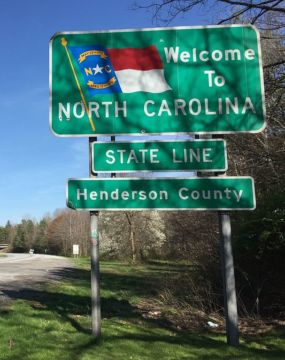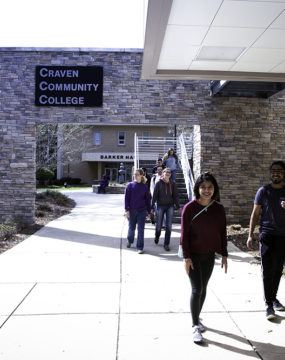Welcome to our blog
Keep up with our latest demographic insights

Women’s History Month has its roots in various “Women’s History Week” celebrations dating back to the late 1970s. The commemoration was often anchored to the March 8th observance of International Women’s Day. As support for the celebration grew, Congress ultimately passed a resolution recognizing March 7, 1982 as “Women’s History Week”. In 1987, this event was expanded to the entire month in perpetuity. An annual Presidential Proclamation is now issued every March to recognize the…

North Carolina’s population grew by 1.1% between July 1, 2016 and July 1, 2017, gaining nearly 117,000 new residents over the year. New estimates from the U.S. Census Bureau provide detail on how this growth and change occurred across the state. In North Carolina, these estimates indicate emerging trends that we will continue to examine in the coming months. For now, here’s what you need to know about the data. 1. New estimates suggest shift…

The percentage of the state’s total population not born in North Carolina continues to rise. Recent estimates from the American Community Survey indicate that 43% of the overall population is non-native, up 1 percentage point from previous five-year estimates when this share was 42%. This share is even higher among the adult population. Nearly half of all individuals 18 and older were born somewhere else and this group has grown faster than the population overall.…

February marks the arrival of Black History Month, dedicated to celebrating the achievements of Black Americans throughout history. It began as a weeklong celebration in 1926, selected to correspond with the birthdays of Frederick Douglass on February 12th and Abraham Lincoln on February 14th. 50 years later, President Gerald Ford officially recognized the entire month for this commemoration. 2.2 million The total black or African-American population, alone, in North Carolina, as of 2016. This is…

New Geography recently reported on the extent of urban growth among the United States’ 53 major metropolitan areas (defined as having more than one million residents). Findings indicate that the majority of growth has taken place outside of the urban core, within the suburban and exurban regions of the metro area. North Carolina is home to two of these fifty-three major metropolitan areas: Charlotte and Raleigh. Using Wendell Cox’s City Sector Model, we explored the…

Migration is the main driver of North Carolina’s population growth. Three of every four new residents added to the state between July 1, 2016, and July 1, 2017, were from net migration, primarily from other states. (Note: individuals are classified as domestic or international migrants based on their country of prior residence, not on individual characteristics such as place of birth or citizenship status.) Between 2016 and 2017, the Census Bureau estimates that North Carolina…

Every decade, following the decennial Census, the 435 seats in the U.S. House of Representatives are allocated to the 50 states based on their population. After the 2000 Census, 12 House seats shifted between the states; another 12 seats shifted after the 2010 Census. Two years ago, we explored how ongoing population shifts might impact the reapportionment process following the 2020 Census. At that time, the most recent population estimates were for 2014. Today we…

North Carolina’s population grew to an estimated 10.3 million people as of July 1, 2017, according to new estimates from the U.S. Census Bureau. From July 1, 2016 to July 1, 2017, the state’s population increased by nearly 117,000 individuals. This number surpassed last year’s total population increase and marks the largest single year increase in the state’s population since 2010. Among the states, North Carolina had the 5th largest numeric increase since 2016. Only…

Earlier this year, we discussed in a series of blog posts the recent 2016 Census Bureau population estimates for North Carolina. While some municipalities in North Carolina have experienced stable, even explosive growth since 2010, a large portion have experienced little to no population growth in this decade. We are revisiting these estimates with a series of maps of North Carolina’s municipalities. When visualized spatially, several aspects of North Carolina’s unique growth patterns are revealed.…

Colleges and universities can have a significant impact on local demographic and economic statistics. College towns tend to see inflated poverty rates: more off-campus students (as share of population) corresponds to higher poverty rates. In Boone, North Carolina, for example, off-campus students at Appalachian State University make up 57% of the local population* and the local poverty rate is 62%. Some of these poor individuals may be college students who are choosing not to work…
Your support is critical to our mission of measuring, understanding, and predicting population change and its impact. Donate to Carolina Demography today.